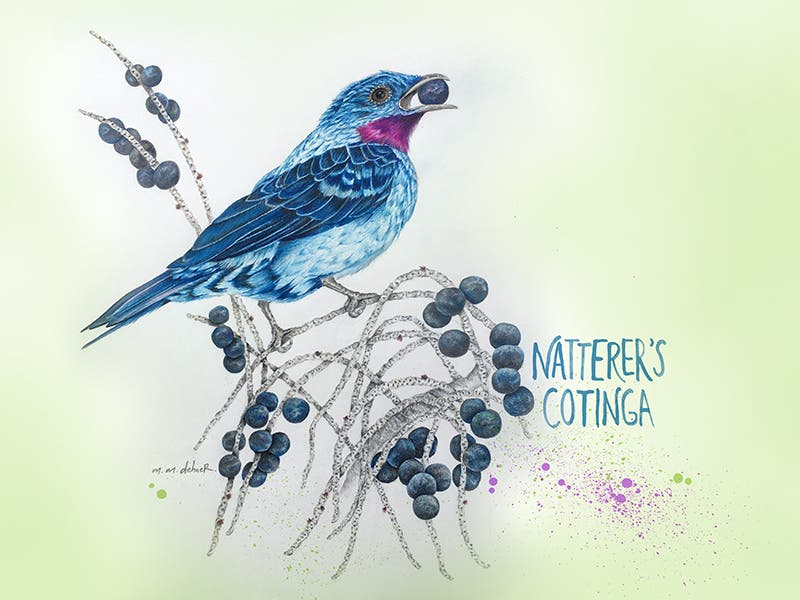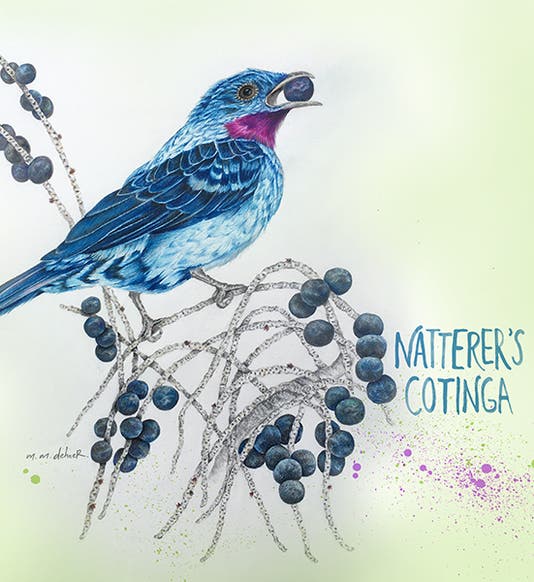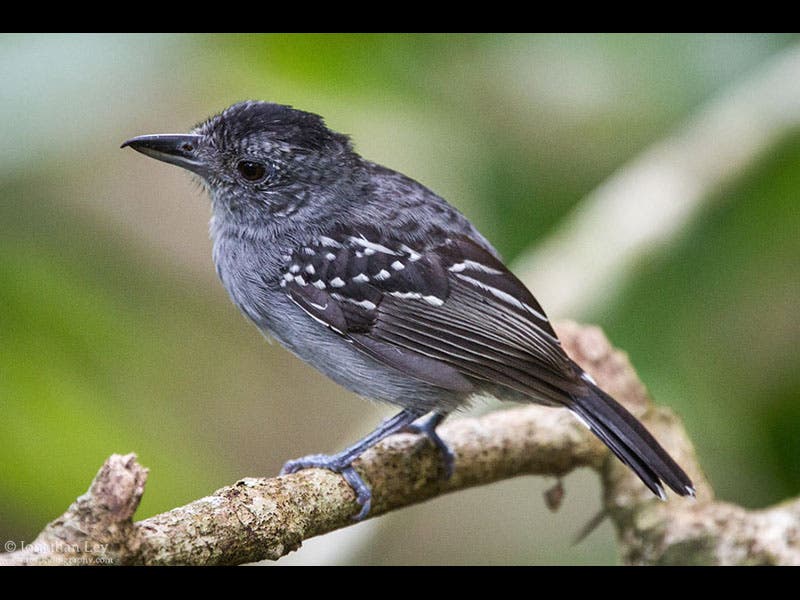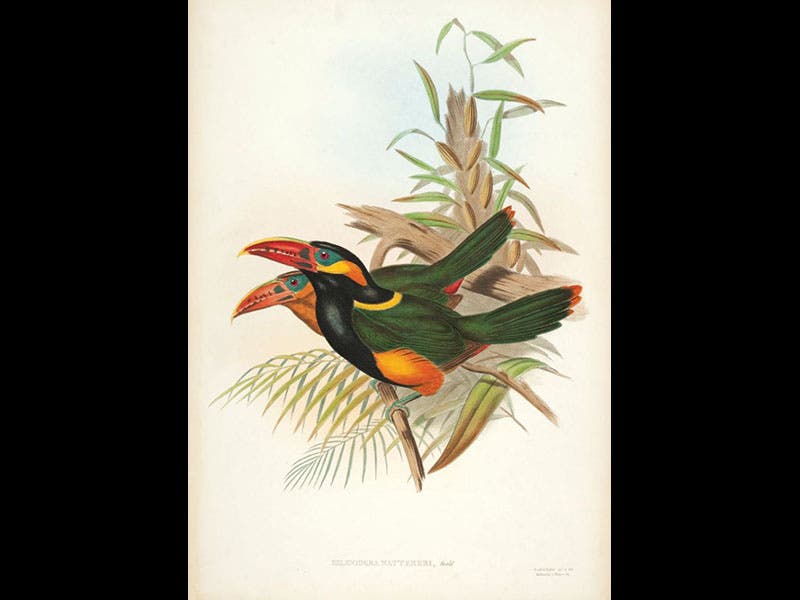Scientist of the Day - Johann Natterer

Melissa Dehner
Johann Natterer, an Austrian naturalist and explorer, was born Nov. 9, 1787. In 1817, Natterer was selected to join a Viennese expedition to Brazil. The occasion was the marriage between the Austrian archduchess Maria Leopoldina and Dom Pedro, son of the King of Portugal, then residing in Rio de Janiero. Since the marriage took place in Vienna and Dom Pedro was not present, a contingent was chosen to accompany Maria to meet her husband in Brazil. It was decided that the contingent should consist of naturalists, who could examine the natural history of the country after Maria was delivered. Two of the naturalists were Bavarians, Johann Battista von Spix and Carl Friedrich von Martius, and once in Brazil, they went their separate ways. Both would be highly successful at collecting, would return to Munich, and would publish important accounts of the flora and fauna of Brazil. Accordingly, both have been among our Scientists of the Day; you will find the entry on Spix here, and on Martius, here.
Natterer had a less rosy path to fame and scholarly respectability. Most of the party of Austrians he was with got sick and returned home. Natterer and a friend decided to stick it out. The expedition was officially terminated in 1821, but Natterer stayed on to collect and explore. As it turned out, he would remain in Brazil for 18 years. He finally returned home in 1835 with tens of thousands of specimens of birds, fish, and insects, most of which went into the collection that would become the Naturhistorisches Museum of Vienna. He also came back with a diary and copious notes, but unlike Spix and Martius, he never wrote a narrative of his travels, and then, shortly after his death, most of his manuscripts were destroyed in a fire. There are occasional drawings of his that can be found in various European cabinets, but they are hard to locate online.
So perhaps Natterer's most visible legacy are the various birds and fish that he discovered, many of which are named after him. We show an assortment above. We begin with Natterer's cotinga, also known as the blue cotinga, which is represented by a brand new drawing by Melissa Dehner, the Library’s resident artist and designer. Those are acai berries that are being guzzled by our feathered forager. The other birds shown are, in order: Natterer's slaty antshrike, Natterer's manakin (also known as the snow-capped manakin), and Natterer's toucanet, here shown as drawn by John Gould. There seems to be only one surviving portrait of Natterer himself (fifth image); I suppose we could call it Natterer’s Natterer.
Dr. William B. Ashworth, Jr., Consultant for the History of Science, Linda Hall Library and Associate Professor, Department of History, University of Missouri-Kansas City. Comments or corrections are welcome; please direct to ashworthw@umkc.edu.










